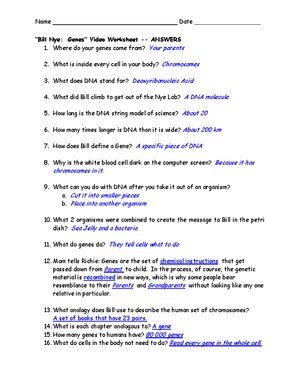DNA, the blueprint of life, is intricately structured, with its length far surpassing its width. How many times longer is DNA than it is wide? The answer lies in the fundamental principles of genetics and molecular biology. Understanding this ratio is vital in comprehending the intricate processes within our cells. Join us on a journey to unravel the mysteries of DNA’s unique dimensions and the significance of its elongated form. Let’s delve deeper into the fascinating world of genetic code and discover the wonders of DNA’s remarkable structure.
How Many Times Longer is DNA Than it is Wide?
Welcome, young scientists, to our exciting exploration into the world of DNA! Today, we are going to unravel the mystery of just how long DNA is compared to its width. Have you ever wondered why DNA is often depicted as a twisted ladder or a double helix? Well, that’s because DNA is a fascinating molecule that holds the key to all life on Earth. Let’s dive in and uncover the secrets of DNA’s amazing structure!
The Building Blocks of Life: Introduction to DNA
Before we delve into the specifics of DNA’s length and width, let’s first understand what DNA is. DNA, short for deoxyribonucleic acid, is like a recipe book that contains instructions for building and maintaining all living organisms. It is made up of chemical building blocks called nucleotides, which are arranged in a specific sequence. These nucleotides come in four different types: adenine (A), thymine (T), cytosine (C), and guanine (G).
Now, imagine DNA as a twisted ladder, with each rung of the ladder connecting two sides. The sides of the ladder are made up of alternating sugar and phosphate molecules, while the rungs are formed by pairs of nucleotides. This unique structure allows DNA to carry genetic information in a compact yet efficient way.
Unraveling the Mystery: DNA Length and Width
So, how long is DNA exactly? To answer this question, we need to consider the dimensions of a single DNA molecule. Scientists have measured the average width of a DNA molecule to be about 2 nanometers (nm). Now, let’s find out how long DNA is compared to its width.
When we talk about the length of DNA, we usually refer to the distance between the two ends of a DNA strand. The length of a DNA molecule can vary depending on the organism it belongs to. For example, the DNA in a human cell can stretch up to an incredible 2 meters long when fully extended!
Now, let’s do some simple math to calculate how many times longer DNA is than it is wide. If the width of DNA is 2 nm and the length can reach up to 2 meters, we can use the following formula:
Length of DNA / Width of DNA = Number of times DNA is longer than it is wide
Substitute the values into the formula:
2 meters (200,000,000 nm) / 2 nm = 100,000,000
So, DNA is an astonishing 100 million times longer than it is wide! Isn’t that mind-blowing? This incredible length-to-width ratio is what allows DNA to pack a vast amount of genetic information into a tiny space.
The Wonders of DNA Folding
Now, you might be wondering how such a long molecule can fit inside the nucleus of a cell, which is a crowded and compact space. The secret lies in DNA folding. DNA molecules are not randomly coiled inside the nucleus; instead, they undergo a series of intricate folding patterns that allow them to be neatly packed.
One of the key players in DNA folding is a group of proteins called histones. These proteins act like spools around which the DNA wraps itself, forming structures known as nucleosomes. These nucleosomes further coil and condense to create chromatin, the material that makes up chromosomes.
Through this folding process, DNA can be tightly packaged while still maintaining accessibility to the genes that need to be activated. This organized structure is crucial for proper gene regulation and cell function.
The Influence of DNA on Our Traits
As we learn more about DNA and its incredible properties, we begin to understand how it influences our traits and characteristics. Each person’s DNA is unique, containing a specific combination of genes that determine things like eye color, hair texture, and even susceptibility to certain diseases.
Imagine DNA as a set of instructions that tells our bodies how to grow, develop, and function. Just like how a recipe book guides a chef in creating a delicious dish, DNA guides our cells in carrying out their specialized functions. This intricate dance of genetic information shapes who we are as individuals.
Exploring the Future of DNA Research
As scientists continue to unravel the mysteries of DNA, new possibilities are emerging in the field of genetic research. Techniques like gene editing and gene therapy hold the potential to treat genetic disorders and improve human health.
By studying the structure and function of DNA, researchers are unlocking the secrets of life itself. From understanding genetic diseases to exploring the diversity of life on Earth, DNA plays a central role in shaping our world.
Conclusion: The Marvels of DNA
So, young scientists, we have embarked on a thrilling journey into the world of DNA and its remarkable properties. We have discovered that DNA is not only incredibly long, but also intricately folded to fit inside our cells. Its influence on our traits and characteristics is profound, shaping the very essence of who we are.
As we continue to explore the mysteries of DNA, let us marvel at the elegance of this fundamental molecule and the wonders it holds. Who knows what new discoveries await us as we delve deeper into the secrets of life encoded in the twists and turns of DNA!
Keep asking questions, keep seeking answers, and remember, the world of science is full of endless possibilities. Happy exploring, young scientists!
Your DNA 🧬 Is Actually REALLY Long And Incredibly Thin
Frequently Asked Questions
How much longer is DNA compared to its width?
DNA is typically much longer than it is wide. The length of DNA can vary depending on the organism, but on average, DNA is about 2 meters long in human cells. In comparison, the width of DNA, which refers to its diameter, is about 2 nanometers. This means that DNA is roughly a billion times longer than it is wide.
What is the ratio of length to width in DNA?
The length to width ratio of DNA is incredibly high. As mentioned earlier, the length of DNA in human cells is about 2 meters, while its width is about 2 nanometers. This results in an impressive ratio of 1:1,000,000,000, illustrating the elongated structure of DNA compared to its narrow width.
Why is DNA considered highly elongated in structure?
The highly elongated structure of DNA is essential for its function in storing genetic information. The long, thread-like structure of DNA allows it to coil and pack efficiently within the tiny nucleus of a cell. This compact packaging is crucial for fitting the entire genome within the limited space of the cell while still enabling the necessary processes for gene expression and replication to take place.
Final Thoughts
DNA is a remarkable molecule with unique characteristics. Its length is significantly longer than its width. When considering its structure, one can observe how many times longer DNA is than it is wide. This ratio plays a crucial role in its functions and processes within living organisms. Understanding this aspect sheds light on the complexity and efficiency of DNA.




